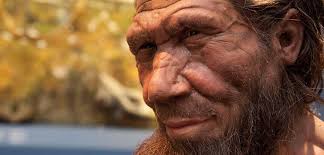
When did Neanderthals interbreed with ancient humans? New research sheds light on our origins
The remnants of Neanderthal DNA in modern genomes have long raised questions among scientists about interspecies mating. Two new studies shed light on when it happened and when ancient humans left Africa.
Most non-Africans can attribute about 1% to 2% of their DNA to Neanderthal ancestors. Scientists have found out new details of this evolutionary history, writes NBCNews.
The two research teams separately analyzed collections of ancient genomes and came to the same conclusions on some of these basic questions. Their findings show that Neanderthals and ancient humans interbred for a limited period of time when the latter left Africa and migrated to new continents.
A wave of interbreeding occurred between about 43,500 and 50,500 years ago, according to the findings. Then, over the next 100 generations, most of the Neanderthal DNA was removed, but not all. The DNA that remained is linked to traits such as skin pigmentation, immune response and metabolism, experts say.
According to the new findings, the interbreeding event occurred later than some previous scientists had assumed, which shifts and narrows the possible range of time when humans spread to places like modern China and Australia.
It also explains the significance of fossilized human remains discovered outside of Africa, such as in Europe, that date back more than 50,000 years. New research suggests that these populations became extinct and an evolutionary dead end.
“Human history is not just a story of success. We actually went extinct several times. There are several lineages that have been discovered now that did not contribute to the emergence of later humans,” said Johannes Krause, a professor at the Max Planck Institute for Evolutionary Anthropology in Germany.
The findings also demonstrate how skilled anthropologists have become at reconstructing ancient DNA and analyzing it to draw conclusions about the course of human history.
The two research groups had different approaches to their work. The group of Priya Murjani, associate professor of molecular and cellular biology at the University of California, created a catalog of genomic information from 59 ancient people who lived from 2000 to 45,000 years ago and 275 modern people.
The researchers then analyzed changes over time in the distribution and length of Neanderthal DNA in these genomes. They determined that the flow of Neanderthal genes into humans occurred approximately 47,000 years ago and lasted no more than 7,000 years.
These findings are consistent with archaeological evidence that suggests that Neanderthals and humans coincided in geography as the latter traveled out of Africa.
The other new study relied on the analysis of six genomes from remains discovered in Ranis, a cave in modern-day Germany that is located beneath a medieval castle. The remains date back to about 45,000 years ago, and the DNA suggests that two of the six individuals were mother and daughter.
The researchers also analyzed DNA from a person found in a cave in the modern Czech Republic, about 140 miles from Ranis. Both sites date to roughly the same period. The results showed that the two individuals found in Ranis were closely related to the individual in the Czech cave.
Scientists have concluded that the individuals found at the two sites were most likely part of a small isolated population, perhaps as few as 200 people, that went extinct.
However, the DNA of these people has the same traces of Neanderthal influence as the remains analyzed by another team of researchers. This strengthens the idea of interbreeding.
“It’s always nice to have two independent studies working with independent data using independent methods that come up with almost the same answer. It gives a lot of confidence,” said Joshua Aki, a professor at Princeton University’s Lewis-Sigler Institute for Integrative Genomics, who was not part of the research team.
Chris Stringer, professor and head of human evolution research at the Natural History Museum in London, said that identifying the interbreeding event helps to build other key parts of human evolution.
“I believe that interbreeding was frequent enough and there was enough of it that it contributed to the extinction of Neanderthals by incorporating them into human populations. But this is still an assumption,” said Joshua Aki.



Comments (0)